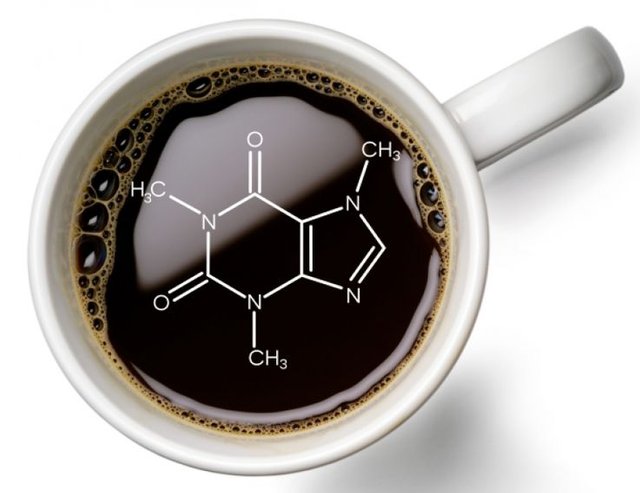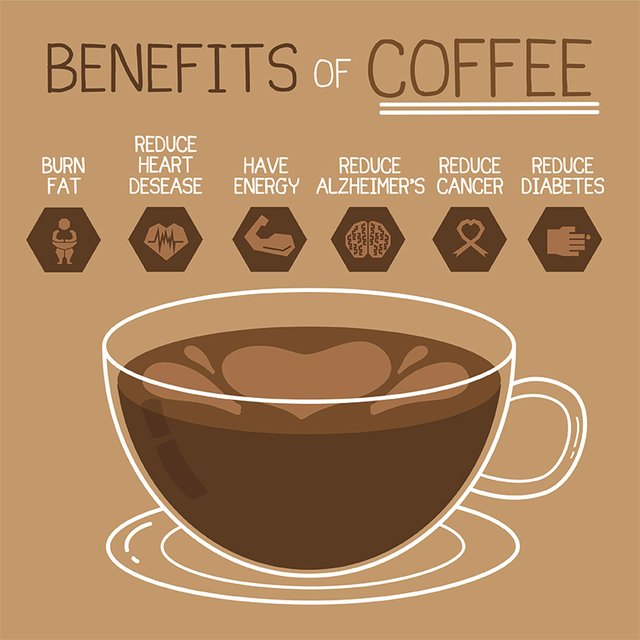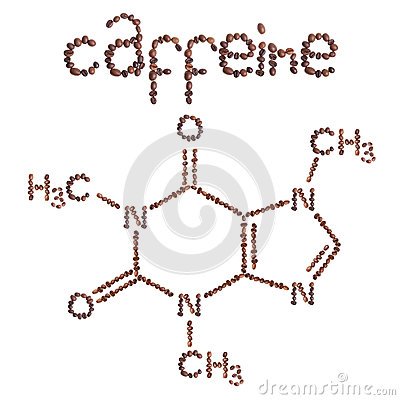A cup of chemical coffee.
We know that we love it, that its effects help us to be more alert and focused, it is the extra dose of energy that we sometimes need, and also its flavor captivates us. Coffee is tempting for many reasons, and chemistry has answers to several of them.

Source
One of the most well-known and used effects of coffee is that it helps to avoid the sensation of sleep, especially in the morning when we still feel numb. Is that at that time, we still have in our body a significant amount of melatonin, which is the hormone that controls the circadian cycle and induces sleep, is the one that begins to increase as we feel sleepy. Coffee allows us to eliminate melatonin faster from our system and still feel active.
But in addition, coffee gives us a delicious taste and an irresistible aroma, which is also the effect of a complex process that goes from the planting and harvesting of the green grain to the preparation and subsequent ingestion and metabolization in our body.
There are some 66 species of coffee plants, although commercially, two stand out: the Coffea arabica, with about two-thirds of the world production, and the robusta coffee, with a third of the total. The robust variety offers a more intense coffee, with a harder and earthy aroma, while the arabica is the one that offers a higher quality coffee and lowers caffeine content.
At the beginning of the process, the grain contains 65% water and after drying it is reduced to 10 or 12%. They must take great care to achieve a high-quality coffee. Once dry, the skin is removed. A single grain in poor condition can spoil the entire mixture, so it is removed.
Another important point to get to a good coffee is roasting, where all kinds of chemical reactions are triggered. Green coffee contains about 250 different volatile aromatic molecules, while after roasting, this number triples. When roasted, any remaining water is removed from the grain and reactions are triggered by sugars, proteins, lipids, and minerals.

Source
At a temperature of between 185 and 240 degrees Celsius, the sugars combine with the amino acids, peptides, and proteins following the caramelization process are known as the Maillard reaction, which is the same that gives the beef that brownish color and that Particular flavor when cooked.
In coffee, a brown color and a bittersweet taste are also obtained, composed of glycosylamine and melanoidin, which give rise to the characteristic coffee flavor, while the many volatile molecules emerge creating the characteristic aroma.
When receiving heat, the carbon dioxide inside the grain expands can reach 25 atmospheres, and some grains can explode. The volume of the grain increases by 50% while its weight is reduced by one fifth.
The roasting process can last between 90 seconds and 40 minutes, according to the temperature used. At higher temperatures, a more bitter taste is obtained, which is used in a short time. The longer roasts are used with varieties of lower quality, impairing the flavor. Low temperatures, on the other hand, fail to trigger the reactions that give rise to the coffee's own flavor and the result tends to be acidic.
In an espresso machine, we pass hot water through the coffee powder at a pressure of about 9 atmospheres and a temperature between 92 and 94 degrees. When the coffee powder is compressed in the coffee machine, the particles are held together thanks to an oily substance, while some air spaces remain between them.

Source
The crushed coffee should be slightly less than the water pressure so that the final mixture flows at a rate of one milliliter per second. Thirty seconds of percolation (the process of passing water between the coffee particles) results in a dense coffee of about 30 milliliters and generates foam.
If the foam is too light it means that the coffee was not well pressed, the water temperature was too low or the extraction time too short. If the color of the cream is too dark and a hole forms in the center, it means that the mixture was overpressed and the amount of coffee powder in the water too high.
The coffee obtained is a polyphase colloid, in which water molecules are attached to small air bubbles, tiny drops of oil and some solid fragments. The aroma molecules evaporate little by little, so the taste of a good espresso can last up to 20 minutes in the mouth.
Continuing with the chemistry of coffee in the brain, we must consider that caffeine is a molecule similar to adenosine, a brain substance that has a protective effect, by decreasing its activity when we are tired. Because of its similarity, caffeine manages to insert itself into the adenosine receptors, blocking it by eliminating the feeling of fatigue, but also evading brain protection. That is why we feel active and alert, but if we deprive ourselves of adenosine permanently, the effects can be harmful.
At the digestive level, caffeine is broken down in the liver into three different molecules, such as paraxanthine, theobromine, and theophylline. Paraxanthine improves athletic performance by sending fat to the muscles as an energy source. Theobromine increases the levels of oxygen and nutrients in the brain. And theophylline increases the heart rate, the force of contraction of the heart.

Source
For all these reasons, caffeine offers its energetic effect, while coffee delights us with its flavor, aroma, and texture. Chemistry explains all these phenomena, although coffee for many, is not explained: be a passion.
Nice picture with the chemical compound in the cup itself, the most important chemical compound i think its the carbon witch helps you with your free radicals